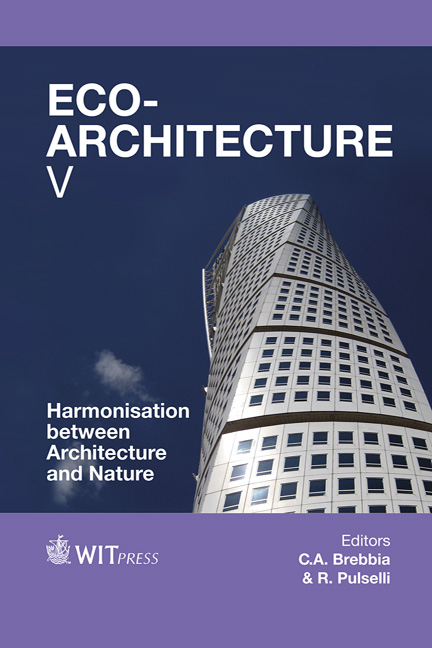Vertical Greenery Systems As Sustainable Solutions For Building Retrofitting: A Case Study
Price
Free (open access)
Transaction
Volume
142
Pages
9
Page Range
127 - 135
Published
2014
Size
1,710 kb
Paper DOI
10.2495/ARC140121
Copyright
WIT Press
Author(s)
A. Martínez-Rocamora, R.M. Pulselli, J. Solís-Guzmán, M. Marrero, S. Bastianoni
Abstract
In this paper, an environmental impact assessment has been developed for evaluating advantages and disadvantages of installing a Vertical Greenery System (hereafter VGS) on two south-oriented facades of a building, together with movable wooden slats on its windows. Initial investment has been compared to annual maintenance costs and energy savings in terms of equivalent solar energy, based on the eMergy method. An existing building in Siena (Italy) was taken as a case study. Thermal performances were simulated based on reliable parameters. These were hypothesized for modelling the envelope and windows as well the effects of the VGS and slats on indoor climate conditions. Results showed that installing the VGS and wooden slats over the south-west and south-east facades (around 800m2) would decrease the cooling energy demand during warm months of around 50% and highlighted the environmental profitability of the proposed solution for a 130,000m3 building. Compared to previously published results (98m2 VGS of a 1000m3 detached house) which report a quota of 15% cooling energy saving, this model demonstrates that potential benefits of VGS can significantly increase due to the scale-factor (i.e. dimension of facades and building volumes) and the combination with wooden slats.
Keywords
eMergy evaluation, cooling energy saving, living wall, sustainable development solutions





